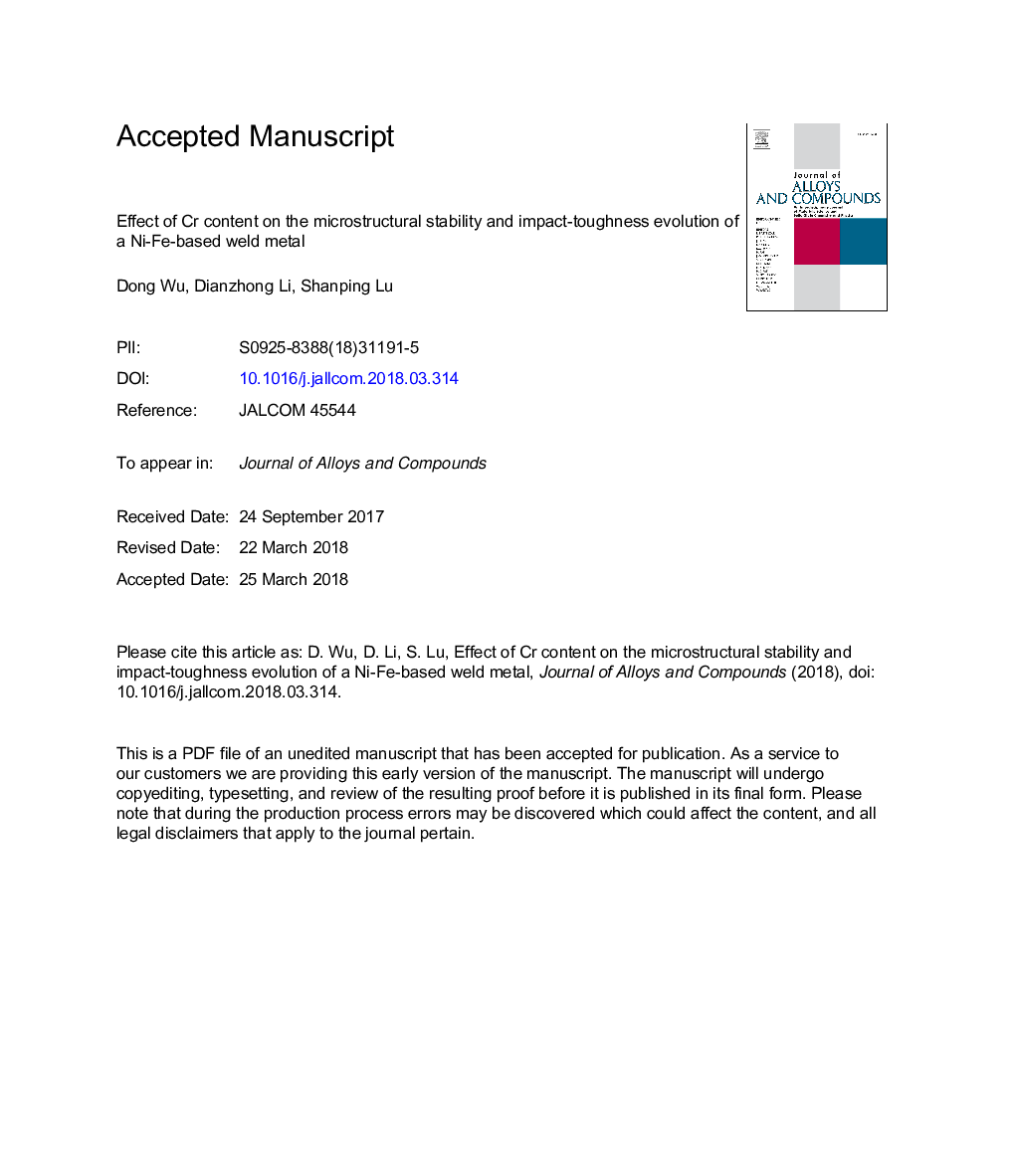| Article ID | Journal | Published Year | Pages | File Type |
|---|---|---|---|---|
| 7992055 | Journal of Alloys and Compounds | 2018 | 28 Pages |
Abstract
Microstructural stability and impact-toughness evolution of a Ni-Fe-based weld metal with different Cr contents was investigated during long-term thermal exposures up to 10000â¯hâ¯at 700â¯Â°C. With an increase in the Cr content from 21.1 to 23.5â¯at.%, plate-like sigma (Ï) and α-Cr phases formed during the thermal exposure. These phases were mainly located in the interdendritic areas and grew significantly as the thermal exposure time increased. The coarsening process of the γⲠphase obeyed the Lifshitz, Slyozov, and Wagner (LSW) model, and the γⲠparticles maintained a coherent relationship with the γ matrix during the thermal exposure. Carbides (M23C6) formed and coarsened at the grain boundaries, and their distribution gradually transformed from discontinuous to continuous during the thermal exposure. The evolutions of the γⲠphase and M23C6 carbides were not significantly affected by the Cr-content variation. As the thermal exposure time increased, the room-temperature impact toughness degraded significantly, and a ductile (intragranular)/brittle (mixed intergranular and intragranular) transition occurred. The degradation of impact toughness mainly occurred due to coarsening of the M23C6 carbides along the grain boundaries and the growth of plate-like phases (Ï, α-Cr) in the interdendritic areas.
Keywords
Related Topics
Physical Sciences and Engineering
Materials Science
Metals and Alloys
Authors
Dong Wu, Dianzhong Li, Shanping Lu,
